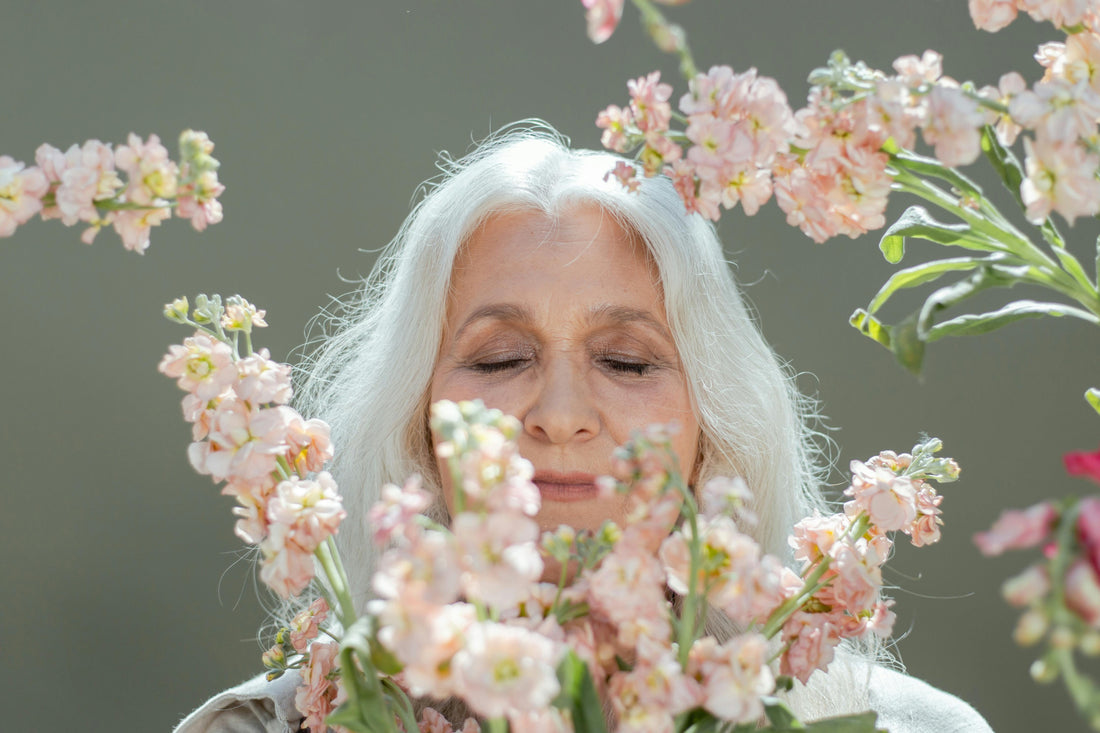
The Evolving Scalp: A Scientific Guide to Nourishing Mature Hair and Follicles
Share
The human body is in a constant state of change, and the scalp ecosystem is no exception. The passage of time brings about a series of natural, physiological shifts that directly impact the health of the hair follicle and the skin that surrounds it. These changes are not a sign of decline but rather a transition into a new phase of life, one that demands a corresponding evolution in care. The approach that served you in your twenties may no longer be sufficient, as the scalp's requirements for nourishment, hydration, and protection become more specific and nuanced. Recognizing and responding to these changes with targeted, scientifically-grounded strategies is the key to maintaining a healthy scalp and supporting the vitality of your hair through every life stage.
One of the most significant drivers of change is the natural fluctuation of hormone levels. Hormones like estrogen and testosterone play a critical role in regulating the hair growth cycle, sebum production, and the overall health of the scalp skin. As these hormonal levels gradually shift over time, the effects on the scalp can be profound. One common manifestation is a change in the hair growth cycle itself. The anagen, or active growth, phase may shorten, leading to hair that does not grow as long as it once did and may feel finer in diameter. Simultaneously, the follicles can become more sensitive to androgens like dihydrotestosterone, a process that can gradually miniaturize the follicle, resulting in thinner hair strands. This is a genetically influenced and hormonally mediated process that requires a care strategy focused on follicle fortification and creating an optimal growth environment.
Alongside these follicular changes, the scalp's skin itself undergoes a transformation. The natural production of sebum, the skin's own moisturizing oil, often begins to slow. This can lead to a scalp that is drier, more prone to feelings of tightness and itchiness, and more vulnerable to irritation because the protective hydrolipidic film is diminished. Furthermore, the skin's natural ability to retain moisture and its rate of cellular renewal can decrease over time. This means the scalp's barrier function may not be as robust as it once was, making it more susceptible to damage from external stressors like UV radiation, pollution, and even the mechanical stress of styling. This combination of reduced oil production and a less resilient barrier creates a scalp environment that is fundamentally different from its younger state, necessitating a shift from oil-control focused products to those that prioritize replenishment and protection.
Another critical factor to consider is the cumulative effect of a lifetime of exposure. Decades of chemical processing, heat styling, and environmental assault from sun and pollution can take a toll on both the hair shaft and the scalp. The hair's cuticle, the protective outer layer, can become permanently weathered, leading to strands that are more porous, brittle, and prone to breakage. On the scalp, this cumulative damage can contribute to oxidative stress and chronic, low-grade inflammation, which is an enemy of healthy hair growth. This historical burden means that a care routine must not only address current needs but also work to repair and protect against the consequences of past exposure. The focus must be on incorporating ingredients with antioxidant and anti-inflammatory properties to soothe the scalp and defend the follicles.
Adapting your routine to meet these evolving needs requires a thoughtful, multi-pronged approach. Cleansing should be gentle yet effective, using pH-balanced formulas that cleanse without stripping the scalp of its essential oils. Harsh sulfates can be particularly damaging to a more mature, drier scalp and should be avoided in favor of milder surfactants. The cornerstone of your new routine, however, should be targeted treatment that delivers active nourishment directly to the follicle and the surrounding skin. A product like Ground Recovery Oil® is uniquely suited for this task. Its blend is designed to address the core challenges of the evolving scalp. The inclusion of rosemary oil, which has been studied for its potential to support hair growth, helps to stimulate microcirculation, delivering nutrients to the follicle. Meanwhile, antioxidant-rich amla oil works to fortify the hair fiber and protect against oxidative stress, while lightweight oils like jojoba and batana provide deep hydration that mimics the scalp's natural sebum, replenishing moisture without clogging pores.
Supporting this intensive pre-wash treatment should be a daily practice of maintenance and protection. A scalp toner is no longer a luxury but an essential tool for maintaining the ecosystem. A mist like Scalp Silk® serves this function perfectly. By spritzing it onto the scalp daily, you actively work to maintain the ideal acidic pH of 4.5 to 5.5, which is crucial for a healthy microbiome and a strong skin barrier. The hydrating and soothing ingredients, such as rose water and aloe, provide immediate relief to a dry, tight scalp, while the formula helps to defend against the environmental aggressors that contribute to cumulative damage. This daily ritual is a simple yet powerful way to create a stable, balanced foundation for hair growth.
Finally, the role of physical stimulation cannot be overstated. As circulation can become less efficient over time, actively stimulating blood flow to the scalp becomes increasingly important. Integrating the use of the Tranquillity Scalp Gua Sha into your weekly routine provides a mechanical boost to circulation, ensuring that the follicles receive the oxygen and nutrients they need. This practice, especially when used to massage in your Ground Recovery Oil®, enhances product absorption and helps to release tension, promoting a healthy environment for hair growth. By embracing a routine that combines gentle cleansing, intensive nutrient delivery with targeted oils, daily pH balancing with a treatment mist, and enhanced circulation through massage, you are not fighting the natural evolution of your scalp. You are partnering with it, providing the specific support it needs to foster healthier, stronger, and more resilient hair for years to come.
